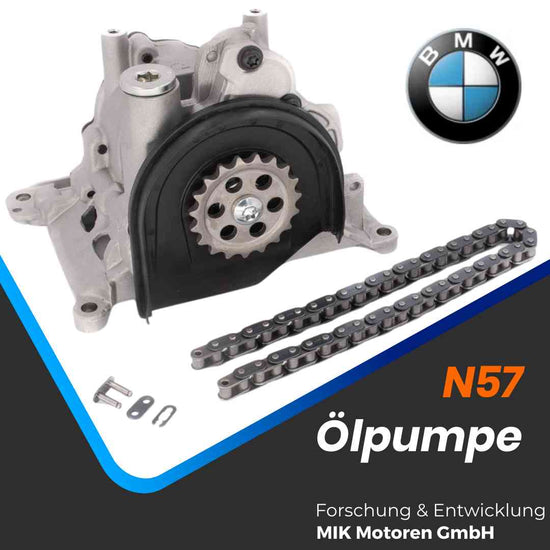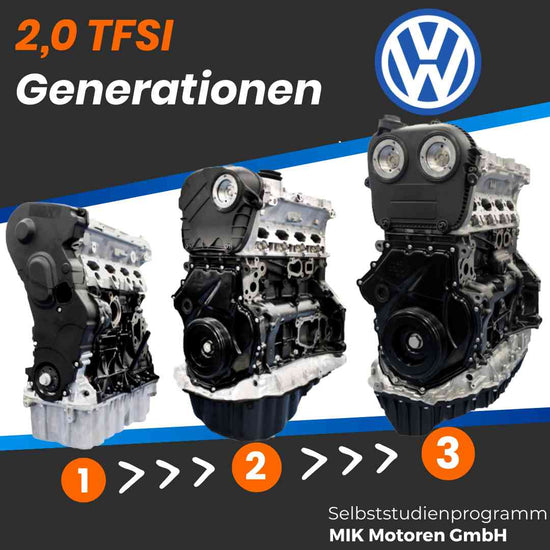OM642 - 3.0L DIESEL ENGINE
"Der 3.0-liter turbo diesel with the engine code OM642 from Mercedes Benz is a prime example of how versatile and consistently an engine design can be utilized. For decades, the OM642 engine has been installed in a variety of Mercedes models, making it the absolute workhorse in the portfolio of the Stuttgart automaker.
Despite its widespread use and long service life, the OM642 is not free from problems and errors. Especially when it comes to the durability of certain components, the V6 diesel engine still shows some weaknesses. Improper handling and maintenance can lead to malfunctions and significant engine damage.

WEAK POINTS
The OM642 engine, a diesel engine known for its technical finesse as well as its weaknesses, poses a real challenge for many of its vehicle owners after a certain mileage.
1.) One of the most frequently discussed issues concerns the leaks at the seals of the Heat exchangers and the accompanying dramatic consequential errors. This specific vulnerability leads to significant costs, as the replacement of these so-called "penny seals" requires extensive preparation and the heat exchanger (oil cooler) is not easily accessible. For this reason, many vehicle owners prefer to tolerate a few oil stains on the underbody protection rather than fix the leaks in the oil cooler. Ignoring the correct procedure for this repair has fatal consequences.
2.) The OM642 engine uses a Bosch common rail fuel system, which is known for its performance. However, the components used Piezo injectors high demands on the quality of diesel fuel, which makes them quite susceptible to wear. A defective injector has a direct impact on the components of the engine mechanics of the OM642. The pistons can melt or even break under the influence of poorly atomized fuel. If fuel gets into the oil, it becomes heavily diluted and can no longer guarantee its lubricating properties. The result is often a major engine failure, as we will discuss in the course of this article.
3.) Another weak point of the OM642 engine is the Fuel quantity control valve In the injection pump, which has a tendency to regular failures. The replacement is simple and a malfunction usually does not lead to consequential damage, as the uneven engine running and the storage of errors in the error memory are noticed early and a repair can be initiated.
4.) Often unnoticed is the pollution of the Swirl flaps, which are located within the charge air distributors. The exhaust gas recirculation system (EGR) supplies cooled exhaust gases to the charge pressure distributors and later to the combustion process. This system is essential for compliance with exhaust emission regulations. The recirculated exhaust gases contain large amounts of soot particles, which accumulate in the form of oil carbon on the surface of the charge pressure distributors. These contaminants regularly lead to malfunctions of the swirl flaps, which are indispensable for the torque curve of the engine. Consequently, the OM642 engine loses power or can be severely damaged by dislodged oil carbon particles. The regular cleaning of these components is - like many maintenance tasks - unfortunately not included in the inspection interval of the OM642. We will change that!
5.) Regarding the Turbochargers a robust Garrett turbine is installed, which typically operates for up to 300,000 kilometers without noticeable noise, provided that the necessary lubrication and cooling of the component are ensured. The variable turbine geometry (VTG) system can become blocked due to heavy contamination. A common cause of damage to the OM642 turbine is collisions with particles, as well as lubrication failure due to insufficient oil pressure or poor oil quality.
6.) Ultimately, the OM642 engine is known for frequent leaks in the lubrication system and the Oil pump It is not considered particularly powerful. Since the engine is sensitive to low oil pressure and no warning signals from the manufacturer are provided in the cockpit, a drop in oil pressure and the associated loss of lubrication goes unnoticed. Only when damage becomes clearly audible or the engine seizes do vehicle owners seek out an auto repair shop. However, by then it is often too late for a smart repair.
THE SOLUTION
Since the weaknesses of the OM642 engine are often in a capital engine damage If no measures are taken by the manufacturer to avoid these problems, the vehicle owner must either take action themselves or have one of our selected partner companies nearby install a MIK Upgrade Oil Pump to commission to protect its V6 diesel engine in the long term from massive wear due to insufficient oil pressure.
Regular engine maintenance is worthwhile, as we not only protect your OM642 engine from known damage, but also improve its longevity and thereby ensure the proper functioning of the engine in the future through a Motor Protection Guarantee!
TOTAL FAILURE OF OM642
One of the most common causes of a catastrophic engine failure in the OM642 is bearing damage in the area of the main bearings or connecting rod bearings after a mileage of between 150,000 and 200,000 kilometers. These damages are often associated with interventions on the engine, such as the replacement of the heat exchanger (oil cooler) or the replacement of the turbocharger, where there is a risk that dirt particles can enter the main oil channel and thereby cause significant damage to the bearing shells of the OM642. Interestingly, these problems also occur without any work being done on the engine, indicating deeper underlying causes.


Some automotive workshops proceed with the utmost care to avoid particle entry into the main oil channel, and therefore carry out extensive cleaning work before replacing the heat exchanger or turbocharger. Nevertheless, issues continue to occur regularly. Warehouse damages The damage typically manifests as knocking noises from the crank drive of the OM642 engine and metallic wear, which is usually found in the oil filter but can also be present in the oil pan. Further investigation reveals that the crankshaft is always damaged at least at one main bearing and the corresponding connecting rod bearing. read more
REPAIR - A REAL CHALLENGE
Processing of the main bearing groove of an OM642 engine block:
- Restore the plan area of the storage racks
- Measure the position of the storage brackets
- Drilling the storage aisle
- Finish by means of horizontal honing to create roundness, alignment, and surface.
- Introducing new grooves for the reinforced bearing shells
- Measuring the crankshaft
- Check piston protrusion and rework if necessary
- Check the escape of the shaft seal and, if necessary, rework it.
read more
ADDITIONAL KNOWLEDGE DOCUMENTS
Discussion 😍 😮 😇😫 😤😉
We invite you to share your experiences with us and to present, discuss, and make the OM642 a significantly better engine.
The longevity of your engine is our mission!
Suggestions for additional articles and self-study are very welcome!







10 comments
Mein Sohn hat seit 2 Tagen einen Vito 3 Liter 6 Zyl. mit Motorschaden in Borgholzhausen stehen!
Was können Sie empfehlen?
MFG
Hans W. Raulf
Tel. 05424-40200
Mnogo sam vozio i KM prešao sa OM642 , volim taj motor i sve sam radim na njemu, u W 211 ima 700K dok u ostala dva ML_A W 164 ima 350K , nedavno moj brat je imao problem sa C 300 CDI 2011god , na 280K ,uradjen je hladnjak ulja i prošao od tada nekih 50K i auto je počeo loše raditi, kada smo otvorili ,glavni ležaj je bio spaljen i leteći lager na jednoj klipnjači ,mene zanima samo jedna stvar , da li je isti donji deo motora na Om642 iz 2006 god i Om 642 iz 20011 god , hvala puno
Mein S211 280CDI 190 PS hat nun fast 400.000km gelaufen bis auf Verschleiß nix gehabt……ist auch von unten staubtrocken…..fahre meine Fahrzeuge (4 Stück davon 3 mit Stern einer mit Blitz) immer mit Verstand.
Ich fahre einen GLK BJ2009 350CDI mit 370.000km. Der Ölkühler wurde bei 190.000km erneuert, und ist seit die violetten Dichtungen drinnen sind dicht. Der Motor bekommt alle 5.000 km eine Ölwechsel mit Filter. Läuft super und hat volle Leistung. Die einzige Fehlkonstruktion ist der schwer dicht zu bekommende Reinluftkanal am Anschluss des Turboladers. Da hilft nur einmal im Jahr Dichtung wechseln. Vielleicht kann man hier eine andre Möglichkeit finden um dies auch zu beseitigen. aber sonst ist der Motor voll OK
Hätte ich das mal eher gelesen.
Mich hat es vor ein paar Tagen erwischt.
Mitten auf der Autobahn ging mein ML 320 von 2007 aus. Am Abstellort in der Ausfahrt, lag eine beträchtliche Menge Öl.
Werkstatt hat festgestellt, dass der Motor jetzt festsitzt.